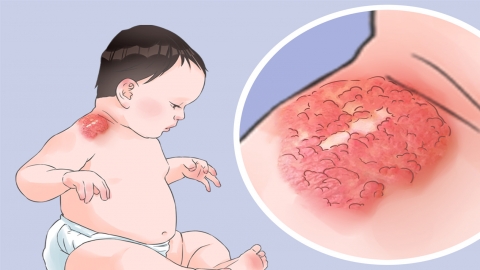What is hemangioma?
Under normal circumstances, the main causes of hemangioma formation include genetic factors, abnormal embryonic development, hormonal changes, abnormal proliferation of vascular endothelial cells, and local tissue hypoxia. If symptoms suggestive of hemangioma are detected, it is recommended to seek timely medical evaluation at a正规 hospital. Detailed explanations are as follows:

1. Genetic Factors
Some hemangiomas show familial inheritance tendencies. If there is a family history of hemangioma, the probability of offspring developing hemangioma increases. Genetic factors may affect mechanisms related to vascular development, leading to abnormalities in vascular structure and function, thereby triggering hemangioma formation.
2. Abnormal Embryonic Development
During embryonic development, if the differentiation and formation of vascular tissues are disrupted by external factors—such as medications or radiation—vascular development may become disordered, resulting in localized abnormal blood vessel proliferation and ultimately forming a hemangioma.
3. Hormonal Changes
During pregnancy or puberty in females, significant fluctuations in hormone levels—such as estrogen and progesterone—may stimulate vascular endothelial cells, promoting vasodilation and proliferation, thus increasing the risk of hemangioma development. Some hemangiomas may slow their growth or even regress after hormone levels stabilize.
4. Abnormal Proliferation of Vascular Endothelial Cells
Vascular endothelial cells are essential components of blood vessel walls. When the regulatory mechanisms controlling their proliferation become imbalanced, excessive cell growth can occur, leading to the formation of abnormal vascular clusters that manifest as hemangiomas. This abnormal proliferation may be associated with dysregulated cellular signaling pathways or gene mutations.
5. Local Tissue Hypoxia
Prolonged hypoxia in localized tissues stimulates the release of angiogenic factors, promoting the formation of new blood vessels to improve oxygen supply. However, if this neovascularization process becomes uncontrolled, it can lead to abnormal blood vessel overgrowth and result in hemangioma formation.
If abnormal red or purple masses appear on the skin or mucous membranes and gradually increase in size over time, prompt medical consultation is advised for definitive diagnosis. Daily precautions should include avoiding friction or pressure on the affected area to prevent rupture and bleeding. If treatment is required, appropriate methods should be selected under medical guidance, with regular follow-up visits to monitor disease progression.






